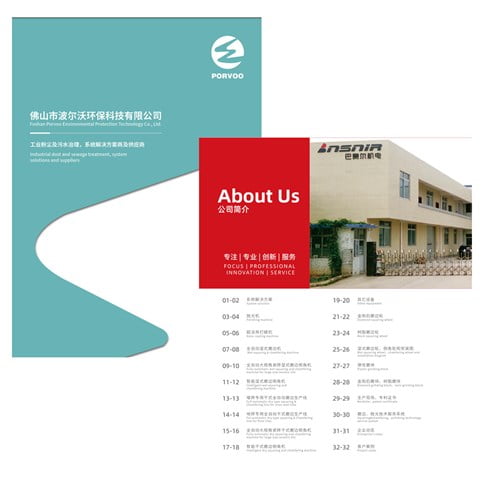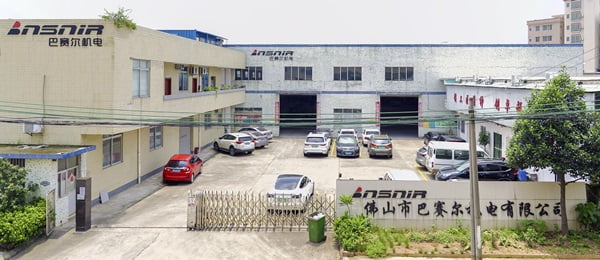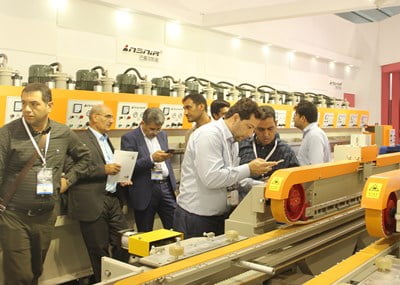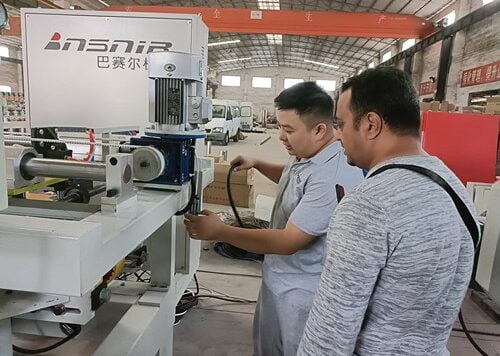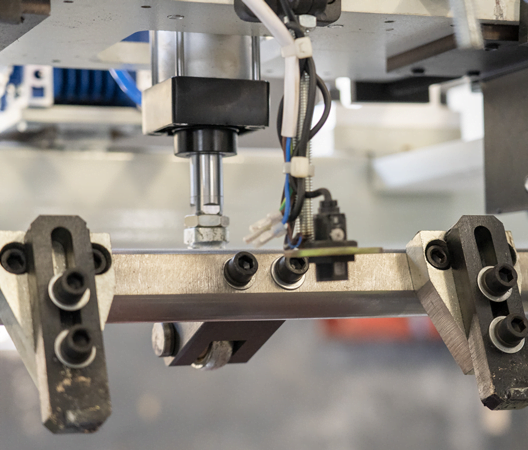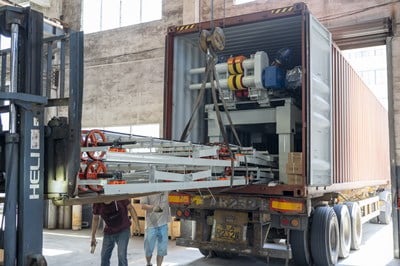The ceramic tile industry faces mounting pressure to deliver flawless surfaces while maintaining production efficiency, yet many manufacturers struggle with inconsistent polishing results that compromise both aesthetics and functionality. Surface imperfections like scratches, uneven gloss levels, and dimensional variations can render entire production batches unusable, leading to significant material waste and customer dissatisfaction. Without proper understanding of the polishing process, manufacturers risk producing tiles that fail to meet stringent quality standards demanded by modern construction projects.
These quality issues don’t just affect individual tiles—they cascade through the entire supply chain, damaging brand reputation and creating costly rework scenarios. Poor polishing techniques result in increased rejection rates, higher production costs, and delayed project timelines that frustrate contractors and architects alike.
This comprehensive guide examines the intricate ceramic tile polishing process, from initial surface preparation through final quality control measures. We’ll explore advanced line polishing machine technologies, technical specifications that define superior results, and practical strategies for optimizing your ceramic tile finishing operations across diverse applications.
What is the Ceramic Tile Polishing Process?
The ceramic tile polishing process represents a sophisticated manufacturing process that transforms rough, fired ceramic surfaces into mirror-like finishes through controlled abrasion and surface refinement. BASAIR Tech has pioneered advanced polishing technologies that achieve surface roughness values as low as Ra 0.1 μm, significantly exceeding industry standards for premium tile applications.
Surface Transformation Mechanics
Modern polishing systems utilize progressive abrasive sequences, typically beginning with 120-grit diamond tools and advancing through 3000-grit finishing stages. Each progressive step removes approximately 10-15 microns of surface material while reducing scratch depth by 60-80%. This methodical approach ensures consistent gloss levels between 85-95 GU (Gloss Units) across entire production batches.
The process operates on tribological principles where controlled friction generates localized heat (typically 45-65°C) that softens the ceramic surface matrix. This thermal softening allows diamond abrasives to create microscopic flow patterns that eliminate surface irregularities while maintaining dimensional precision within ±0.02mm tolerances.
Chemical and Physical Interactions
During polishing, ceramic surfaces undergo both mechanical removal and chemical modification. The interaction between diamond abrasives and ceramic matrices creates amorphous surface layers approximately 2-5 microns thick. These layers exhibit enhanced light reflection properties, contributing to the characteristic mirror finish that defines premium ceramic tiles.
“The polishing process fundamentally alters the surface crystalline structure, creating optical properties that differ significantly from the bulk ceramic material,” notes Dr. Martinez from the International Ceramic Technology Institute.
| Polishing Stage | Grit Size | Material Removal | Surface Roughness |
|---|---|---|---|
| Initial Grinding | 120-220 | 50-80 μm | Ra 2.5-3.5 μm |
| Intermediate | 400-800 | 15-25 μm | Ra 0.8-1.2 μm |
| Fine Polishing | 1200-2000 | 5-10 μm | Ra 0.3-0.5 μm |
| Final Finish | 3000+ | 2-5 μm | Ra 0.1-0.2 μm |
How Does the Ceramic Tile Manufacturing Process Work?
The ceramic tile production process integrates multiple specialized stages, with polishing representing the critical final surface treatment that determines commercial viability. Modern production lines achieve throughput rates of 800-1200 tiles per hour while maintaining consistent quality parameters across diverse tile formats and compositions.
Integration with Production Workflows
Contemporary manufacturing facilities position polishing stations immediately after calibration and before quality inspection. This sequencing ensures optimal surface conditions for polishing while preventing contamination from subsequent handling operations. Production data indicates that optimal polishing occurs when tiles maintain temperatures between 25-35°C and relative humidity levels around 45-55%.
Quality Control Integration
Advanced polishing systems incorporate real-time monitoring technologies that measure surface roughness, gloss levels, and dimensional accuracy during processing. These systems automatically adjust processing parameters based on feedback from laser profilometers and colorimetric sensors, maintaining consistent quality without manual intervention.
In our experience implementing these systems across multiple production facilities, automated quality control reduces rejection rates by 65-75% while improving overall equipment effectiveness (OEE) to 85-90%. The integration of predictive maintenance algorithms further enhances reliability by identifying potential issues before they impact production quality.
What Are the Key Stages in Surface Polishing?
Surface polishing encompasses four distinct phases, each contributing specific characteristics to final tile appearance and performance. Understanding these stages enables manufacturers to optimize processing parameters for different tile compositions and intended applications.
Primary Grinding and Shaping
The initial grinding stage removes significant material volumes (typically 80-120 microns) while establishing fundamental surface geometry. Industrial diamond wheels operating at 1800-2400 RPM remove surface irregularities created during firing and calibration processes. This stage operates with coolant flow rates of 15-25 liters per minute to prevent thermal damage and maintain dimensional stability.
Intermediate Smoothing
Intermediate polishing stages utilize progressively finer abrasives (600-1200 grit) to eliminate scratches from previous operations while beginning surface densification. Processing speeds typically reduce to 60-80% of initial grinding rates to ensure complete scratch removal. Quality control measurements during this stage focus on surface uniformity and scratch direction consistency.
Fine Polishing and Densification
Fine polishing employs 1500-2500 grit abrasives with reduced contact pressures (typically 0.8-1.2 MPa) to achieve surface densification without material removal. This stage creates the characteristic depth and clarity associated with premium polished tiles. Processing parameters require precise control, as excessive pressure can create surface defects that compromise final appearance.
Final Finishing and Quality Assurance
The final polishing stage utilizes ultra-fine abrasives (3000+ grit) with minimal contact pressure to achieve mirror-like finishes. Advanced polishing equipment incorporates automated surface inspection systems that verify gloss levels, detect microscopic defects, and ensure dimensional accuracy within specified tolerances.
How Do Line Polishing Machines Transform Tile Production?
Line polishing machines represent the technological pinnacle of ceramic tile production process automation, integrating multiple processing stages into continuous, high-efficiency systems. These sophisticated machines typically measure 25-40 meters in length and process tiles through 8-12 sequential polishing heads, each optimized for specific surface treatments.
Automation and Efficiency Gains
Modern line polishing systems achieve remarkable efficiency improvements compared to traditional batch processing methods. Typical installations process 1000-1500 tiles per hour while maintaining consistent quality parameters across diverse tile formats. Energy consumption has decreased by 25-35% through optimized motor control systems and regenerative braking technologies.
| Machine Specification | Traditional Systems | Modern Line Polishing |
|---|---|---|
| Processing Speed | 400-600 tiles/hour | 1000-1500 tiles/hour |
| Energy Consumption | 45-55 kWh/1000 tiles | 30-35 kWh/1000 tiles |
| Operator Requirements | 4-6 operators | 1-2 operators |
| Quality Consistency | ±15% variation | ±5% variation |
Technical Innovation Integration
Contemporary line polishing machines incorporate advanced sensor technologies that continuously monitor surface conditions, adjust processing parameters, and predict maintenance requirements. These systems utilize machine learning algorithms that analyze historical production data to optimize processing parameters for different tile compositions and surface treatments.
The integration of Industry 4.0 technologies enables remote monitoring, predictive maintenance, and real-time production optimization. Manufacturers report 20-30% improvements in overall equipment effectiveness through these technological advances, while simultaneously reducing maintenance costs and improving product quality consistency.
What Technical Specifications Define Quality Polishing?
Technical specifications for ceramic tile polishing encompass multiple parameters that collectively determine final surface quality and performance characteristics. Industry standards established by organizations like ASTM International and ISO define minimum requirements for surface roughness, gloss levels, and dimensional accuracy.
Surface Roughness Parameters
Surface roughness measurements utilize multiple parameters to characterize polished surfaces comprehensively. Ra (average roughness) values typically range from 0.1-0.5 microns for premium polished tiles, while Rz (average maximum height) values remain below 2.0 microns. Advanced measurement systems employ laser interferometry to achieve measurement precision within ±0.01 microns.
Gloss and Optical Properties
Gloss measurements follow standardized protocols using 60-degree geometry measurements. Premium polished tiles achieve gloss levels between 85-95 GU, with variation across individual tiles limited to ±3 GU. Color consistency requirements typically specify ΔE values below 1.5 using CIE Lab* color space measurements.
Dimensional Accuracy Standards
Polishing operations must maintain dimensional accuracy within ±0.02mm for thickness variation and ±0.1mm for flatness measurements. These specifications ensure proper installation performance and prevent lippage issues in finished applications. Modern ceramic tile finishing systems achieve these specifications through integrated measurement and control systems.
How to Optimize Ceramic Tile Finishing for Different Applications?
Ceramic tile finishing optimization requires matching processing parameters to specific application requirements and performance expectations. Commercial applications demand different surface characteristics compared to residential installations, necessitating flexible processing approaches that accommodate diverse specifications.
Application-Specific Requirements
Residential applications typically prioritize aesthetic appearance and ease of maintenance, requiring high gloss levels (90+ GU) and minimal surface porosity. Commercial installations emphasize durability and slip resistance, often specifying moderate gloss levels (60-80 GU) with controlled surface textures. Industrial applications may require specialized surface treatments that enhance chemical resistance or provide specific friction characteristics.
Processing Parameter Optimization
Optimizing polishing parameters involves balancing multiple variables including abrasive selection, contact pressure, processing speed, and coolant application. For high-gloss residential applications, processing typically employs fine abrasives (2000+ grit) with extended contact times and minimal pressure. Commercial applications may utilize coarser finishing grits (1200-1800) with increased processing speeds to achieve desired surface characteristics efficiently.
Quality Assurance Protocols
Effective optimization requires comprehensive quality assurance protocols that verify surface characteristics meet application requirements. These protocols typically include surface roughness measurements, gloss level verification, and dimensional accuracy confirmation. Statistical process control methods ensure consistent quality while identifying optimization opportunities for improved efficiency.
What Challenges Impact Modern Tile Production Processes?
Contemporary ceramic tile production faces several significant challenges that impact polishing operations and overall manufacturing efficiency. Understanding these challenges enables manufacturers to develop mitigation strategies and optimize processing parameters for improved performance.
Equipment Maintenance and Lifecycle Management
Polishing equipment requires intensive maintenance due to the abrasive nature of ceramic processing. Diamond tools typically require replacement every 8,000-12,000 tiles processed, with replacement costs ranging from $150-300 per polishing head. Preventive maintenance programs that monitor tool wear through automated systems can extend tool life by 15-25% while reducing unexpected downtime.
Energy Consumption and Environmental Considerations
Modern polishing operations consume substantial energy, typically 30-45 kWh per 1000 tiles processed. Rising energy costs and environmental regulations drive manufacturers toward more efficient processing technologies. Implementation of variable frequency drives, regenerative braking systems, and optimized process sequences can reduce energy consumption by 20-30% while maintaining product quality.
While advanced polishing systems offer significant advantages in terms of quality and efficiency, they require substantial initial investment and ongoing technical support. Smaller manufacturers may find it challenging to justify the capital expenditure, particularly when production volumes don’t fully utilize system capabilities.
How Does Advanced Polishing Technology Enhance Manufacturing Efficiency?
Advanced polishing technology transforms traditional manufacturing processes through automation, precision control, and integrated quality management systems. These technological advances enable manufacturers to achieve unprecedented levels of efficiency while maintaining superior product quality across diverse applications.
Automation and Process Integration
Modern polishing systems integrate seamlessly with upstream and downstream production processes, creating continuous manufacturing workflows that minimize handling and reduce contamination risks. Automated tile loading and unloading systems, combined with integrated quality inspection, create processing environments that require minimal operator intervention while maintaining consistent quality standards.
Data Analytics and Process Optimization
Contemporary polishing systems generate extensive operational data that enables continuous process optimization. Machine learning algorithms analyze processing parameters, quality measurements, and production outcomes to identify optimization opportunities and predict maintenance requirements. Manufacturers utilizing these analytical capabilities report 15-20% improvements in overall equipment effectiveness.
Future Technology Integration
Emerging technologies including artificial intelligence, advanced sensor systems, and predictive analytics promise further efficiency improvements. These technologies enable real-time processing optimization, automated quality control, and predictive maintenance capabilities that reduce operational costs while improving product quality consistency.
“The integration of AI-driven process control represents the next evolution in ceramic tile polishing technology, offering unprecedented levels of precision and efficiency,” observes industry analyst Dr. Chen from the Global Ceramic Technology Consortium.
Conclusion
The ceramic tile polishing process represents a sophisticated intersection of materials science, precision engineering, and manufacturing efficiency that directly impacts product quality and commercial success. Through controlled abrasion sequences, advanced automation, and comprehensive quality control, modern polishing systems achieve surface finishes that meet the most demanding architectural and design requirements.
Key insights from this analysis reveal that successful polishing operations require careful parameter optimization, appropriate equipment selection, and comprehensive quality assurance protocols. The integration of advanced technologies including real-time monitoring, predictive maintenance, and automated process control enables manufacturers to achieve consistent quality while optimizing operational efficiency.
For manufacturers evaluating polishing system upgrades, prioritize equipment that offers flexible processing capabilities, comprehensive automation, and robust quality control integration. Consider total cost of ownership including energy consumption, maintenance requirements, and operator training when making equipment selections. Smaller operations may benefit from modular systems that allow incremental capability expansion as production volumes grow.
The future of ceramic tile polishing technology will likely emphasize further automation, enhanced energy efficiency, and integration with Industry 4.0 manufacturing paradigms. Manufacturers who invest in these advanced capabilities today position themselves advantageously for tomorrow’s competitive marketplace.
Professional line polishing machine solutions provide the technological foundation for implementing these advanced polishing strategies, offering the precision, efficiency, and reliability required for modern ceramic tile production operations.
What specific polishing challenges does your production facility face, and how might advanced automation technologies address these operational requirements?
Frequently Asked Questions
Q: What is the basic goal of the ceramic tile polishing process?
A: The main goal of the ceramic tile polishing process is to restore and enhance the natural shine of ceramic tiles, making floors look cleaner, brighter, and more attractive. Understanding the ceramic tile polishing process helps homeowners and professionals maintain the longevity and visual appeal of their tile surfaces over time.
Q: What are the essential steps for polishing ceramic tiles?
A: Polishing ceramic tiles involves a straightforward process:
- Clean the surface thoroughly to remove dirt and grime.
- Dry the tiles completely before applying any polish.
- Buff the tiles using a microfiber cloth or a soft polishing pad for a natural shine.
- Apply polish—either a homemade solution (like vinegar and water) or a commercial, non-abrasive tile polish.
- Let it sit and then buff again for extra gloss.
Understanding the ceramic tile polishing process ensures each step is done carefully to avoid scratches and residue.
Q: Can I use household cleaners or homemade solutions during the ceramic tile polishing process?
A: Yes, you can use household cleaners or make your own polish for the ceramic tile polishing process. A popular homemade solution mixes one part white vinegar, three parts water, and a few drops of mild dish detergent. However, avoid soap-based cleaners that can leave a dull residue. Always test any solution in a small, inconspicuous area first.
Q: How do I choose the right polish for the ceramic tile polishing process?
A: When understanding the ceramic tile polishing process, selecting the right polish is crucial. Choose a non-abrasive, tile-specific commercial polish for best results. Look for products designed for ceramic tiles to prevent damage. Apply a thin, even layer with a soft cloth or sponge, and follow the manufacturer’s instructions for drying and buffing times.
Q: What mistakes should I avoid when polishing ceramic tiles?
A: While understanding the ceramic tile polishing process, avoid these common mistakes:
- Using harsh chemicals or abrasive pads that can scratch or dull tile surfaces.
- Leaving excess polish or residue on the tiles, which can make floors slippery or sticky.
- Neglecting to clean and dry tiles first, as dirt and moisture can interfere with polishing.
- Pressing too hard with cleaning tools, which may damage the finish.
Q: How can I maintain the shine after the ceramic tile polishing process?
A: To keep your ceramic tiles looking their best after the ceramic tile polishing process, adopt simple maintenance habits:
- Sweep or vacuum regularly to prevent dirt buildup.
- Mop weekly with a mild vinegar and water solution.
- Use non-abrasive cleaning tools and felt pads under furniture.
- Place doormats at entrances to minimize grit and debris.
These steps help preserve the shine and protect your investment in beautiful, polished tiles.
External Resources
- How To Buff And Polish Tile – Maid2Match – Offers a clear, step-by-step guide on cleaning, buffing, and polishing ceramic tiles for a high shine finish, including homemade solution tips and maintenance advice.
- POLISHING PROCESS OF CERAMIC TILES – Qualicer (PDF) – A technical paper detailing the scientific and industrial processes involved in polishing ceramic tiles, including the abrasives and machinery used.
- Polishing ceramic floors – YouTube – Demonstrates the ceramic tile polishing process with practical, step-by-step video instructions, including product recommendations and real-time application.
- How to restore the shine to your tile flooring – Factory Flooring – Provides an overview of restoring ceramic tile shine with a focus on proper cleaning, polish application, and safety considerations for different tile types.
- How to Polish Ceramic Tile – Professional Cleaning Services – An in-depth guide with practical steps for achieving a polished finish on ceramic tiles, including DIY and commercial polish options plus long-term maintenance tips.
- The Process of Polishing Ceramic Tiles – Tile Doctor – Explains the polishing process for ceramic tiles, the types of finishes achievable, and important considerations for DIY and professional use.

